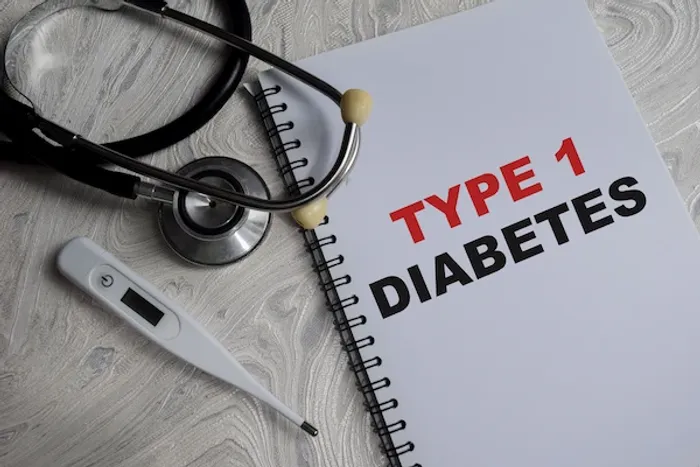Exercise for Type 1 Diabetes: Benefits and Precautions
Know about the type 1 diabetes, exercises, benefits and precautions. Learn about the precautions, safety and best exercises and when to avoid them for type one diabetes.

Written by Dr. Dhankecha Mayank Dineshbhai
Reviewed by Dr. Vasanthasree Nair MBBS
Last updated on 2nd Sep, 2025

Introduction
Living with Type 1 Diabetes (T1D) can be challenging, but regular exercise plays a crucial role in managing blood sugar levels and improving overall health. However, it also requires careful planning to avoid complications like hypoglycemia (low blood sugar) or hyperglycemia (high blood sugar).
In this article, we’ll discuss the benefits of exercise for Type 1 Diabetes, the Best types of exercises, and Precautions to take before, during, and after workouts, tips for safe and effective exercise
Let’s dive in!
Why Exercise is Important for Type 1 Diabetes
Exercise helps in:
- Improving insulin sensitivity – Muscles use glucose more efficiently, reducing insulin resistance.
- Better blood sugar control – Physical activity helps stabilise glucose levels over time.
- Heart health – Lowers the risk of cardiovascular diseases, which are common in diabetics.
- Weight management – Helps maintain a healthy weight, reducing complications.
- Mental well-being – Reduces stress, anxiety, and depression.
However, since T1D affects insulin production, exercise can sometimes cause unpredictable blood sugar fluctuations. That’s why careful monitoring is essential.
Consult the Best Endocrinologist for Personalised Advice
Best Types of Exercise for Type 1 Diabetes
Different exercises affect blood sugar differently. Here’s what works best:
1. Aerobic Exercise (Cardio)
- - Examples: Walking, jogging, cycling, swimming, dancing.
- - Effect on blood sugar: Lowers glucose levels during and after exercise.
- - Tip: Check blood sugar before, during, and after to prevent lows.
2. Strength Training (Resistance Exercise)
- Examples: Weight lifting, resistance bands, bodyweight exercises.
- Effect on blood sugar: May initially raise glucose but improve long-term insulin sensitivity.
- Tip: Start with light weights and increase gradually.
3. Flexibility & Balance Exercises
- Examples Include Yoga, Pilates, and stretching.
- Effect on blood sugar: Minimal impact, but helps with relaxation and mobility.
4. High-Intensity Interval Training (HIIT)
- - Examples: Short bursts of intense exercise followed by rest.
- - Effect on blood sugar: Can cause rapid drops, so monitor closely.
Pro Tip: A mix of cardio + strength training works best for balanced blood sugar control.
Precautions Before, During, and After Exercise
Before Exercise:
Check blood sugar for
- Ideal range: 100-250 mg/dL (below 100? Eat a small carb snack).
- Above 250 mg/dL? Test for ketones (if high, avoid exercise).
- Carry fast-acting carbs (glucose tablets, juice) in case of hypoglycemia.
- Hydrate well – Dehydration affects blood sugar levels.
- Inform someone – If exercising alone, let someone know your plan.
During Exercise:
- Monitor blood sugar – Especially if exercising for more than 30 minutes.
- Watch for symptoms of low blood sugar – Dizziness, sweating, confusion.
- Adjust insulin if needed – Some people reduce insulin doses before workouts.
After Exercise:
- Recheck blood sugar – Exercise can lower glucose for up to 24 hours.
- Eat a balanced meal – Include protein and carbs to stabilise levels.
- Stay hydrated – Helps with recovery.
Tips for Safe Exercise with Type 1 Diabetes
Tips include:
- Start slow – Gradually increase intensity to see how your body responds
- Keep a workout log – Track blood sugar before, during, and after exercise.
- Wear a medical ID – In case of emergencies.
- Use a CGM (Continuous Glucose Monitor) – Helps track trends in real-time.
- Consult your doctor before starting a new exercise routine.
When to Avoid Exercise?
Avoid intense workouts if
- Blood sugar is very low (<70 mg/dL) – Treat hypoglycemia first.
- Blood sugar is very high (>250 mg/dL with ketones) – Risk of diabetic ketoacidosis (DKA).
- You’re feeling unwell – Fever, nausea, or extreme fatigue.
Final Thoughts
Exercise is a powerful tool for managing Type 1 Diabetes, but it requires planning and awareness. By monitoring blood sugar, adjusting insulin, and choosing the right activities, you can stay active safely and effectively.
Consult the Best Endocrinologist for Personalised Advice
Consult the Best Endocrinologist for Personalised Advice

Dr. Anand Ravi
General Physician
2 Years • MBBS
Bengaluru
PRESTIGE SHANTHINIKETAN - SOCIETY CLINIC, Bengaluru

Dr. Gayatri S
Endocrinologist
4 Years • Suggested Qualifictaion- MBBS, MD (Internal Medicine), DM (ENDOCRINOLOGY)
Nellore
Narayana hospital, Nellore

Dr. E Prabhakar Sastry
General Physician/ Internal Medicine Specialist
40 Years • MD(Internal Medicine)
Manikonda Jagir
Apollo Clinic, Manikonda, Manikonda Jagir
(125+ Patients)

Dr. Shruthi B
Endocrinologist
20 Years • MBBS,MD ( GEN MED) DM (ENDOCRIONOLOGY)
Bengaluru
Apollo Clinic, JP nagar, Bengaluru
Aditya Singh
Endocrinologist
8 Years • MBBS
Bengaluru
Apollo One Electronic City, Bengaluru
Consult the Best Endocrinologist for Personalised Advice

Dr. Anand Ravi
General Physician
2 Years • MBBS
Bengaluru
PRESTIGE SHANTHINIKETAN - SOCIETY CLINIC, Bengaluru

Dr. Gayatri S
Endocrinologist
4 Years • Suggested Qualifictaion- MBBS, MD (Internal Medicine), DM (ENDOCRINOLOGY)
Nellore
Narayana hospital, Nellore

Dr. E Prabhakar Sastry
General Physician/ Internal Medicine Specialist
40 Years • MD(Internal Medicine)
Manikonda Jagir
Apollo Clinic, Manikonda, Manikonda Jagir
(125+ Patients)

Dr. Shruthi B
Endocrinologist
20 Years • MBBS,MD ( GEN MED) DM (ENDOCRIONOLOGY)
Bengaluru
Apollo Clinic, JP nagar, Bengaluru
Aditya Singh
Endocrinologist
8 Years • MBBS
Bengaluru
Apollo One Electronic City, Bengaluru
